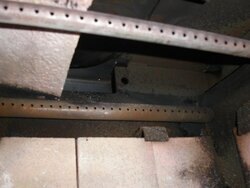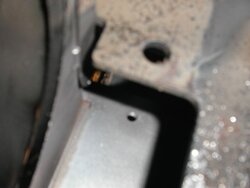Hi everyone this is my first year burning wood and things are going well (except the size of my woodpile) and up until recently I had just regular ashes and unburnt coals. Now over the last week or so I have noticed a hard almost crystalized ash in my firebox that comes out in large chunks. I am trying to think of what I have changed and the only thing I can think of is I am burning hotter with my fan on High. possibly more softwood too. Are these a result of an improper burning technique that I have picked up? Bad wood? Any insight would be appreciated.
Thanks,
Regency 1200i Insert
burning assorted wood ( some not as dry as many of you would recommend.)
Thanks,
Regency 1200i Insert
burning assorted wood ( some not as dry as many of you would recommend.)



 talked to regency and the have had a issue with this type of install, it was common place to install in that mannor.
talked to regency and the have had a issue with this type of install, it was common place to install in that mannor.
